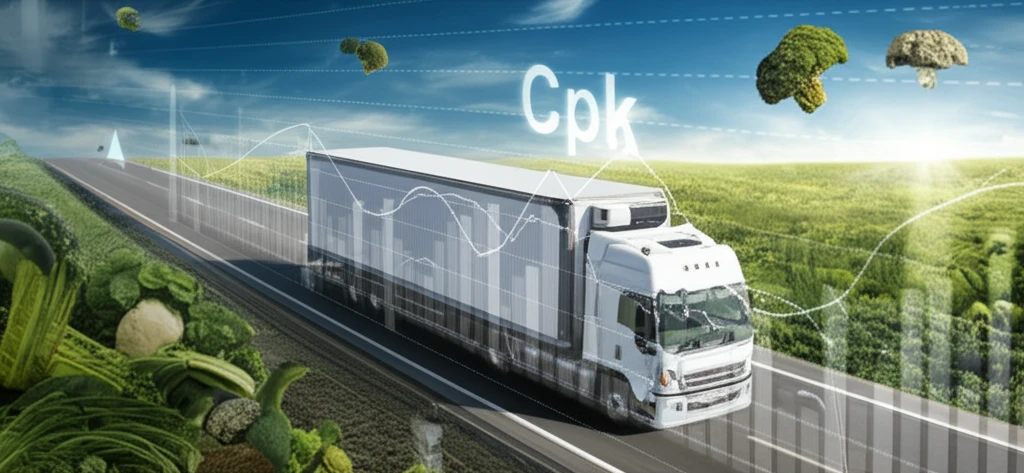
Is Your Food Safe? How Process Capability Index Can Revolutionize Refrigerated Food Distribution
"A deep dive into how the Process Capability Index (Cpk) is transforming the monitoring and thermal performance of refrigerated food, ensuring safer and higher quality products for consumers."
In an era where food safety and quality are paramount, maintaining the correct temperature of refrigerated products throughout the supply chain is crucial. The temperature of these products directly affects microbial activity, which can lead to spoilage and health risks. Therefore, constant monitoring of temperature history is essential for ensuring that what reaches consumers is both safe and of high quality.
Traditionally, Time-Temperature Indicators (TTI) have been used, involving temperature measurements at different intervals to feed into analytical models. Now, the Process Capability Index (Cpk) offers a more advanced approach. Cpk uses TTI data to evaluate whether the thermal characteristics of a process meet specified requirements, thereby providing a reliable metric for assessing temperature control.
This article explores how Cpk is applied to optimize refrigerated food delivery routes, focusing on minimizing travel distance while adhering to strict temperature control standards. We'll delve into the methodologies, findings, and implications of using Cpk to enhance the safety and quality of refrigerated food distribution.
Understanding Process Capability Index (Cpk) and Its Role in Food Safety

The Process Capability Index (Cpk) is a statistical tool used to measure how well a process can produce outputs within specified limits. In the context of refrigerated food distribution, Cpk assesses whether the temperature of products remains within a safe range throughout the delivery process. A high Cpk value indicates that the process is capable of consistently maintaining the required temperature, while a low value signals potential issues that could compromise food safety.
- Data Collection: Temperature data is collected at various points during the distribution process using Time-Temperature Indicators (TTI).
- Statistical Analysis: The collected data is analyzed to determine the mean temperature and standard deviation.
- Setting Limits: Upper and lower specification limits (USL and LSL) are defined based on food safety regulations and product requirements.
- Calculating Cpk: The Cpk value is calculated using the formula: Cpk = min [(USL - Mean) / (3|Standard Deviation), (Mean - LSL) / (3|Standard Deviation)].
- Interpreting Results: A Cpk value of 1.33 or higher is generally considered capable, indicating that the process is well-controlled and consistently produces outputs within the specified limits.
The Future of Food Safety: Embracing Innovation
The integration of Cpk with modern technologies offers a promising path forward for the food distribution industry. By adopting these advanced methods, companies can not only meet regulatory requirements but also exceed consumer expectations for safety and quality. As research continues and technology evolves, the potential for innovation in food safety is limitless.
